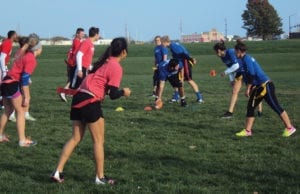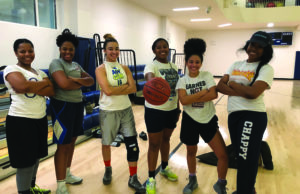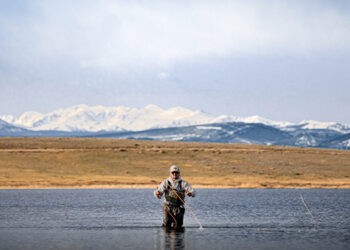What’s trending in the world of intramural sports? Three schools weigh in on what they’ve seen in terms of trends. Plus, they break down how to budget for trends, tips on implementing new intramural offerings and what happens if your intramural program needs to go.
What’s Trending? “The most prevalent trend I am seeing in intramural sports across the region and nation is the adoption of more inclusive policies and sports rules.” – Jon Randle, the assistant director of intramural sports at the University of Kansas
What’s Trending? “We are seeing more teams in our less competitive offerings,” he said. “We’ve also seen an increase in some of our sports outside of the traditional sports; four-versus-four flag football and wallyball have seen an increase in participation over the last few years.” – Nick D’Amato, the assistant program director of intramurals and tournaments at the University of Connecticut
Where do Randle and D’Amato look for trends?
Grassroots efforts – talking to participants and staff, being present at games, soliciting feedback, and collecting data from those who play and those who don’t. “Receiving feedback from participants in the program allows us a chance to assess a student’s intramural sports experience, while receiving feedback from students who do not play can provide us with potential barriers, some of which we can easily remove or address,” said Randle.

Look at the data – look every year at your registration numbers, marketing efforts, forfeit numbers, scheduling, staff training and resource allocation. “We really try to be honest in evaluating our program,” said D’Amato.
What’s trending elsewhere – there’s benefit in knowing how participation is changing prior to students arriving on campus. Ask what sports are not only trending at other recreation programs, but also what’s trending in high schools, shared D’Amato.
View your clubs – “We monitor tryout and rosters numbers for our clubs as well, as they can be a very helpful gauge of what the current population of our campus is interested in,” said D’Amato.
How do you take cost of trends into consideration?
One-time vs. consistent offering – Randle’s first question of trends is will they be offered consistently or as a special event? “This dictates if the necessary funding can come from dollars currently in the budget, or if future budgets need to be adjusted,” he said. “We have offered an event as a one-time special event only to see it be wildly successful; then we reallocated funds in the future budgets to make the event a staple in our schedule of offerings.”
Efficiency sports – D’Amato said they ask what sports can they can offer a good experience for, all with less of a time commitment on the consumer and the organizer end. These are typically self-officiated sports played in a tournament or shorter-duration league. “We have seen our students become more involved in different activities across campus in recent years, so I think they really appreciate when they get an opportunity to participate with a lesser time commitment,” said D’Amato. “It helps us as well when we can keep costs down with a new intramural offering before we know it will be successful.”
Trend Implementation
1: Do your research.
2: Utilize your resources.
3: Ask what has worked at other campuses and what hasn’t.
4: Take notes throughout the planning process and then during, so you can learn from what you did the first time.
5: Consider offering modifications of what you already offer. For example, if basketball is really popular, run a three-on-three tournament.
6: Marketing is crucial for a new activity.
7: Offer demo nights so students can understand what they are getting involved with.
8: Be strategic in the timing of your offerings. For example, D’Amato said they try to run some of their newer offerings at similar registration times to their leagues, as that’s when traffic to IM Leagues is going to be higher. A new offering just might catch someone’s eye.
Or, Just Eliminate It
The trend at Spelman College wasn’t to add more, but to eliminate. Brenda Dalton, the associate vice president for student affairs and the director of health services, said they got rid of their intramural program.

“While there was initial interest in the program, students did not come out and participate in the games,” said Dalton. “They would sign up and then forfeit, and there were so many forfeitures. Students also complained they wanted something less structured and to not have someone blowing a whistle at them.”
This has allowed for the university to focus on the promotion of recreation, group fitness and gaming. Open gym and pick-up games are popular, as are the group fitness classes. Extras like sound therapy and self-defense are also offered. “We were able to reallocate the funds for the intramural coordinator and promote some folks to other positions, as well as give the student workers a raise,” said Dalton.
She said it’s essential to be knowledgeable about the fitness trends in order to remain relevant to students. “We stay on the pulse of what our students want through surveys, social media and face-to-face conversations,” said Dalton.










